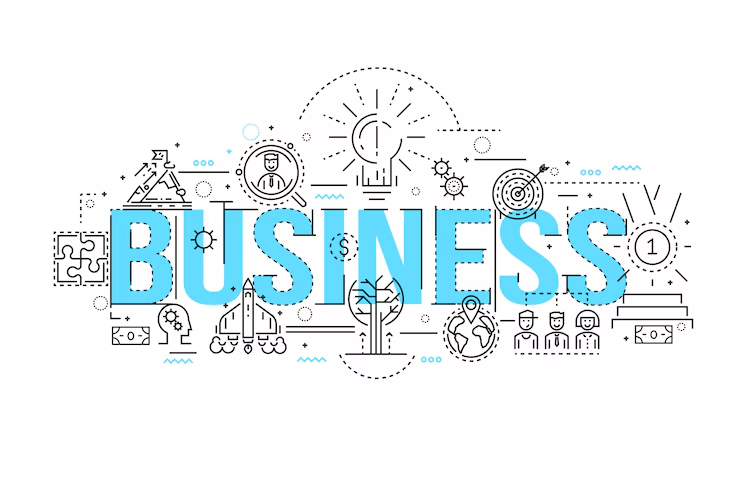Business Today: Trends, Challenges, and the Road Ahead
Business Today: Trends, Challenges, and the Road Ahead
Introduction
The landscape of business today is more dynamic and multifaceted than ever before. How businesses operate and expand continues to be reshaped by globalization, digital transformation, shifting consumer behaviors, geopolitical tensions, sustainability concerns, and economic uncertainty.
With the convergence of technology and market forces, businesses are compelled to evolve or risk obsolescence. In this article, we will explore the key aspects of the modern business world, including emerging trends, common challenges, transformative technologies, and what the future might hold.
The State of Business Today
1. Digital Transformation at the Forefront
In recent years, digital transformation has moved from a competitive advantage to a survival imperative. Technology is being heavily invested in by businesses in a variety of industries, including retail, manufacturing, finance, and healthcare, with the goals of streamlining operations, improving customer experiences, and encouraging innovation.
Key Drivers:
Cloud computing: scalable, flexible, and cost-effective solutions.
AI and machine learning: improving decision-making, automation, and personalization.
Big Data: Driving business intelligence and analytics.
E-commerce platforms: Transforming traditional retail models.
Companies like Amazon, Apple, and Microsoft exemplify the power of digital-first strategies. Cloud software, CRM systems, and mobile-first interfaces, on the other hand, are increasingly being adopted by even small and medium-sized businesses.
2. Remote and Hybrid Work Environments
The COVID-19 pandemic catalyzed a global shift toward remote work, and its effects are lasting. Many companies are now operating with hybrid models, blending in-office and remote teams.
Benefits:
Increased flexibility and work-life balance.
Access to a global talent pool.
Reduce overhead expenses.
Challenges:
Maintaining culture and collaboration.
Data security and IT infrastructure.
Managing productivity and accountability.
In today’s workspace, tools like Zoom, Slack, Microsoft Teams, and Asana have become indispensable.
3. ESG Policies and Sustainability Sustainability is no longer just a buzzword;
It’s a critical part of business strategy. Consumers, investors, and regulators are pushing companies to adopt more responsible environmental, social, and governance (ESG) practices.
Key Trends:
Carbon neutrality and green energy investments.
Ethical sourcing and supply chain transparency.
Diversity, equity, and inclusion (DEI) initiatives.
ESG reporting and compliance.
Organizations like Tesla, Patagonia, and Unilever are recognized for integrating sustainability into their core business models.
4. The Rise of Entrepreneurship and Startups
In today’s business climate, entrepreneurship is booming. Technological barriers to entry have lowered, and platforms like Shopify, Stripe, and crowdfunding sites have democratized business creation.
Notable Features of Modern Startups:
Lean operations and agile development.
Tech-driven innovation.
Direct-to-consumer (DTC) models.
Venture capital and angel investor ecosystems.
Startups are not only disrupting traditional industries (think fintech vs. banks) but also creating entirely new markets—such as the creator economy and the gig economy.
Key Challenges Facing Businesses Today
1. Economic Uncertainty and Inflation
Many economies face inflationary pressures, interest rate hikes, and recession fears. This uncertainty affects consumer spending, investment, and growth forecasts.
Impacts:
Rising costs of goods and services.
tighter budgets and initiatives to cut costs. Delayed capital investments.
Businesses need robust risk management, scenario planning, and agile financial strategies to navigate economic headwinds.
2. Supply Chain Disruptions
From semiconductor shortages to port congestion, global supply chains are under strain. Resilience is still put to the test by the pandemic, geopolitical conflicts, and climate events.
Solutions Under Study:
Nearshoring and reshoring production. Supply chain diversification.
Investment in logistics tech and inventory management systems.
3. Cybersecurity Threats
With increasing digital reliance comes greater vulnerability. Cyberattacks, data breaches, and ransomware incidents are rising in frequency and sophistication.
Top Security Concerns:
Phishing and social engineering.
Ransomware targeting small businesses.
Insider threats and human error.
Companies are investing in cybersecurity infrastructure, employee training, and cyber insurance to mitigate risks.
4. Talent Acquisition and Retention
The “Great Resignation” and shifting employee expectations have made talent management more complex than ever.
Emerging Workforce Trends:
Preference for purpose-driven companies.
Demand for flexibility and autonomy.
Focus on mental health and well-being.
Upskilling and continuous learning opportunities.
Employers must adapt their culture, benefits, and leadership styles to attract and retain top talent in a competitive landscape.
Sector-Specific Insights
1. Technology
Tech continues to be the driver of innovation. Areas such as AI, quantum computing, blockchain, and IoT are shaping the next frontier of business capabilities.
Big Tech vs. Startups:
Big Tech is investing in R&D, cloud infrastructure, and metaverse technologies.
Startups are nimble, niche-focused, and often acquired for innovation.
2. Retail
Traditional retail has been surpassed by e-commerce, with Amazon and Alibaba leading the way. However, brick-and-mortar isn’t dead—it’s evolving.
Trends:
Omnichannel retail experiences.
Personalized shopping through AI.
Social commerce and influencer marketing.
3. Finance
Fintech is transforming how we bank, invest, and manage money.
Notable Developments:
Mobile banking and neobanks.
Cryptocurrency and decentralized finance (DeFi).
Robo-advisors and algorithmic trading.
Regulatory frameworks are playing catch-up with the pace of fintech innovation.
4. Healthcare
The healthcare industry has seen rapid digitization, particularly due to the pandemic.
Innovations:
Telemedicine and virtual care.
Health wearables and remote monitoring.
AI in diagnostics and treatment planning.
Equitable access, interoperability, and data privacy are still major issues.
Business Models of the Future
1. Subscription Economy
More businesses are shifting to recurring revenue models—from software to consumer goods.
Advantages:
Predictable revenue streams.
Greater customer lifetime value (CLV).
Stronger customer relationships.
Examples include Adobe, Spotify, and Netflix.
2. Platform Ecosystems
Businesses are increasingly becoming platforms rather than just product providers. Think Uber, Airbnb, or Shopify.
Key Features:
Network effects.
Data monetization.
Partner integrations.
Platform models allow for scalability and market dominance.
3. Purpose-Driven Brands
Consumers are aligning with brands that reflect their values. Businesses with strong missions are gaining loyalty and advocacy.
Examples:
TOMS and its buy-one-give-one model.
Ben & Jerry’s activism-oriented campaigns.
Globalization vs. Localization
While globalization drives efficiency and access to global markets, localization is becoming more critical to address cultural preferences and regulatory compliance.
Act of balancing:
global strategies with local execution.
Localization of marketing, pricing, and service offerings.
Navigating trade barriers and local laws.
Future Outlook: What Lies Ahead?
1. AI and Automation
As generative AI tools like ChatGPT, Midjourney, and Codex evolve, businesses will continue automating tasks, creating new products, and redefining workflows.
Expectations:
Higher productivity.
Job displacement in certain roles.
Emergence of AI oversight and governance roles.
2. Web3 and Decentralization
Web3 promises a new internet model based on decentralization, ownership, and community-driven governance.
Opportunities:
Tokenized economies.
Decentralized apps (dApps).
NFTs and digital asset ownership.
Despite volatility, many believe Web3 will revolutionize business models.
3. Energy and Climate Change
Innovation Sustainable energy solutions are critical. Innovation in solar, wind, hydrogen, carbon capture, and electric vehicle (EV) technologies is being sparked by the green transition.
Investments and Policy Support:
Government incentives for clean tech.
Corporate pledges for net-zero emissions.
Growing ESG investing.
Conclusion
Business today is shaped by complexity, speed, and interconnectivity. Opportunities in technology, sustainability, and entrepreneurship abound despite persistent difficulties like inflation, cybersecurity, and shifts in the workforce. In this constantly changing ecosystem, businesses that remain adaptable, embrace innovation, and commit to practices driven by purpose will thrive. As we look ahead, the future of business will likely be defined by adaptability, digital fluency, ethical leadership, and a relentless focus on value creation—not just for shareholders, but for all stakeholders.














Post Comment